From the West Hartford Archives: Corbin’s Corner

Audio By Carbonatix
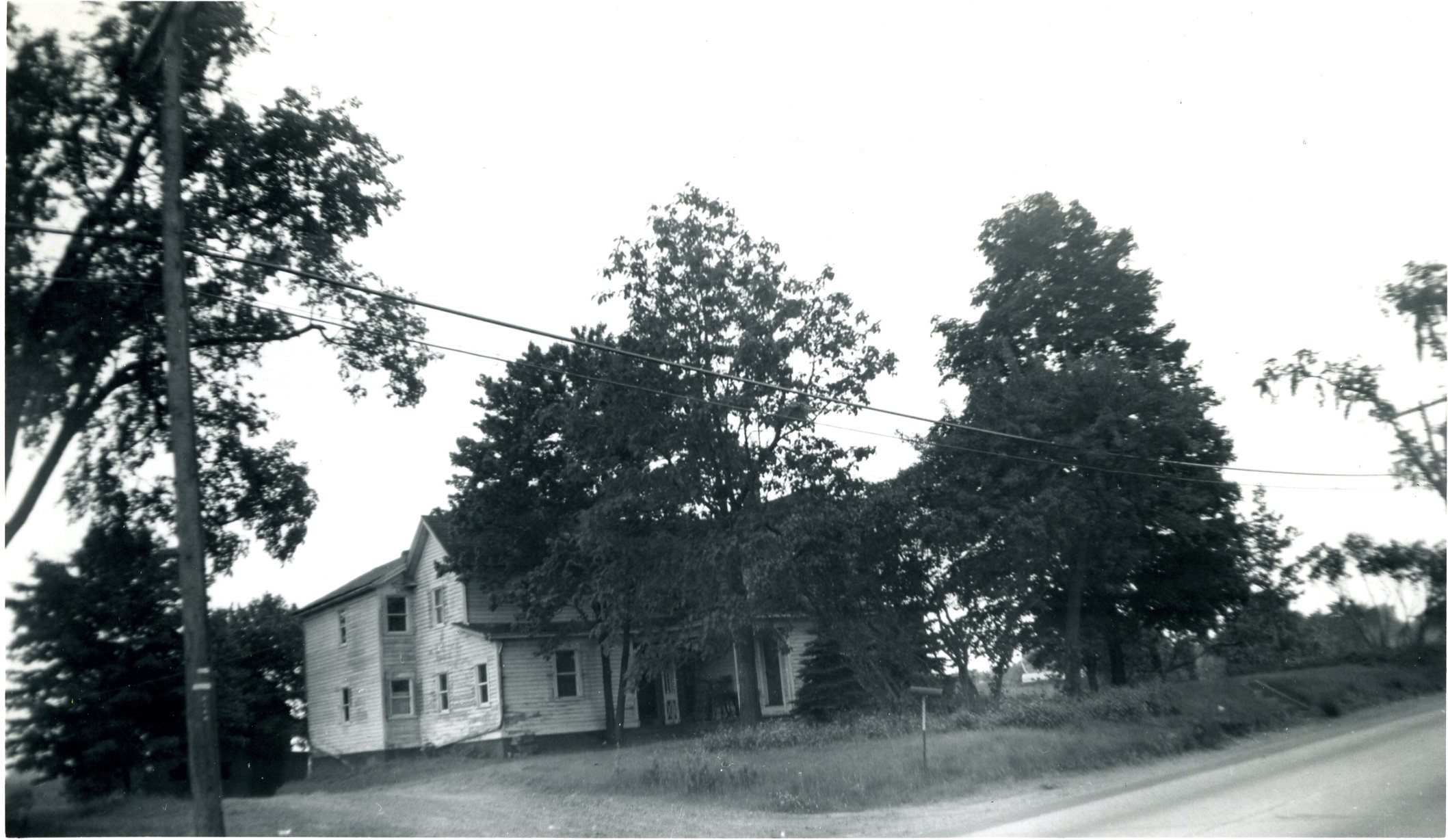
Willaim Banfield Capron house, New Britain Avenue, 1950s. Courtesy of Noah Webster House & West Hartford Historical Society
Historian Jeff Murray takes a look into West Hartford’s past to uncover some surprising information, stir up some memories, or reflect on how much life has changed – or hasn’t changed at all. Enjoy this week’s ‘From West Hartford’s Archives’ …
By Jeff Murray
This is a photo of the old Willaim Banfield Capron house on the south side of New Britain Avenue at Corbin’s Corner in the 1950s.
Born in Uxbridge, Massachusetts, Capron lived in this house in the 1840s and 1850s when he was principal of the Hopkins Grammar School in Hartford. After his marriage in 1856 to Sarah Brown Hooker, who he met while they were both teachers at Hartford High School in the 1840s, the couple sailed for India and served as foreign missionaries for 16 years. After they left, his brother Samuel took over as principal of the grammar school and later was principal of Hartford High School from 1865 until his death in 1874. The Caprons therefore oversaw and witnessed the growth of the formalized Hartford school system from its early years. As late as the 1930s, Hartford Public High School was receiving historical items that could be traced back to the Capron era.
After William and Sarah left the U.S., they sold the house in 1857 to Joel Hamilton and his wife Cornelia, who hailed from Vermont and occupied the house for a short while until it came into the possession of Joseph Davenport, a large local farmer who lived further east at what is now Davenport Road.
The Davenport farm in its prime at the corner of South Main Street employed 10 farm laborers and one domestic servant at the farmhouse. In 1870, more than 80% of the workers on the farm were Black men from Virginia. After the Civil War, New England saw a significant shift in demographics as rural southern Blacks moved north and west for better opportunities away from the South. Cities like Hartford saw many new arrivals, but like most migrants in the region, including immigrants from Europe or Canada, the available jobs (or the jobs made available specifically to them) were either industrial in the city itself or toiling farm work in the outlying suburbs, like West Hartford. Indeed, the remaining farm laborers working for Davenport were recent migrants from Canada and Sweden.
Davenport, who now owned the Capron farmhouse at Corbin’s Corner, rented it out for many years. In 1881, he sold his entire farm at the southwest corner of South Main Street and New Britain Avenue to Charles M. Beach and moved west to Nebraska. It contained two houses and just shy of 100 acres of land. In the 1880s, the Capron house was bought and occupied by Frederick Maehl, a plumber and gas fitter, with his family.
The family that had the most influence on this southeast corner of Corbin’s Corner, however, was the Newton family. Huldah Bragg Newton, whose husband Samuel died in 1880, bought this farm as early as the 1890s and moved to the Capron house from Hartland, Connecticut with her son Isaac J. Newton and her daughter Elnora Newton. They employed three Connecticut-born Irish farm laborers by the turn of the century.
After his mother died in 1902, Isaac and Elnora inherited the farm and were witness to the expansion of Elmwood further east. With the brand new trolley line that had been laid from Hartford to South Quaker Lane, the Newtons advocated for the extension of the line to Corbin’s Corner to connect with residents in Stanley Quarter, New Britain. Indeed, some of the early growth of the Elmwood section of West Hartford built on the fact that New Britain Avenue was a main trade and residential artery between Hartford and New Britain.
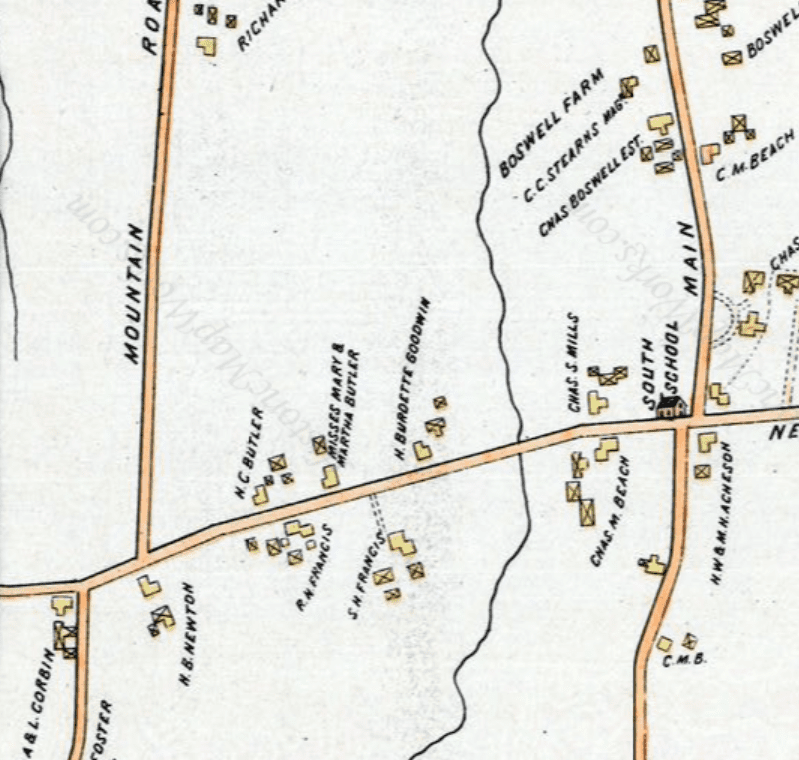
Map from 1896, showing the Corbin and Newton farms on the left side
Corbin’s Corner was named after the Corbin family, whose homestead was across the street where Westfarms Mall was built. The most prominent member of the family was Philip Corbin, who worked in the hardware industry in the 1840s and learned lock-making. After joining forces with his brother Frank, they founded the firm that would become the P&F Corbin Company. They manufactured builders’ and decorative hardware, growing in size in neighboring New Britain.
After his death in 1910, the company eventually consolidated with other manufacturers in the area and became the American Hardware Corporation, which was bought out by Black and Decker in 1989. While Philip and Frank lived in New Britain, the Corbin homestead in West Hartford was owned and occupied by their sisters Ann and Lois after their father’s death in the 1880s. They also boarded several farm laborers through the years as they were in their 80s by the 1910s.
This intersection became a popular checkpoint for improvements in West Hartford. It was paved and added to the mail delivery routes in the early 1900s. It was an exciting stop for the Elmwood bicycle races in the 1890s. The races would start around New Park Avenue, head west to Corbin’s Corner along New Britain Avenue, double back to South Main Street, and reach the Center.
When automobiles became popular, it was similarly an attractive curve for speeding adventurers. In one case, the motorcycle officer in town chased down three young men in a touring car going a whopping 45 mph around the bend. In another situation in 1911, a drunk driver of an empty funeral car drove another automobile with two women off the road at the corner, drawing a flurry of spectators. The famous pioneer aviator Charles K. Hamilton of New Britain took off in an early plane from this farmland and flew over the Capitol in Hartford that same year.
For a few years, Corbin’s Corner also hosted the town’s portable stone crushing plant and quarry for paving roads. The Corbin farm was used for many different enterprises over the years, many of which can be expanded on in a future article.

Aerial photo of Corbin’s Corner in 1934 – the Corbin homestead can be seen on the left and the Newton farm on the right.
Across the street, Isaac J. Newton operated the old Capron farm with his sister Elnora, three farm laborers, and a domestic servant for many years. When Isaac died in the spring of 1950, the house went to Elnora, who had occupied with him all those years. She died less than two years later and without any survivors besides a cousin out of Connecticut, the estate went to Travelers Bank & Trust Company.
Soon after, in December 1952, the 56-acre farm was sold to the Corbin Realty Company for investment purposes. In 1954, they submitted a plan for a shopping center at the southeast corner, which would include a department store and a set of 30 smaller stores. A sketch in the Hartford Courant shows a plan that looks remarkably like the plaza today. They petitioned the town for approval, but it was initially tabled with hesitation, due to the huge acreage of the property and the lack of comprehensive planning.
After some changes to the scale and other proposed buildings, the $7 million shopping center, including a two-story Sears & Roebuck department store, was approved in February 1957. But residents in the area appealed all the way to the State Supreme Court in a lengthy legal battle.
A series of negotiations were held in 1959 between the two sides, with Sears agreeing to cut down the size of the main building and put up a brick wall around the shopping center to help separate it from the residential neighborhood behind it. Opposition centered then around the proposed tire and battery service auxiliary building, which had originally been rejected in the 1956-57 plan, and a 64-lane bowling alley, which residents thought did not keep with the character of the area. A resolution was finally reached in April of 1959 – the plaza with the tire and battery shop was approved, but the bowling alley was killed.
Sears officially purchased the farm from the successor of the Corbin Realty Company that fall and ground was broken in the spring of 1960.
The expansion of a business zone to Corbin’s Corner in the late 1950s, despite the optimism of growth and development, was also something to be feared by residents who believed it would get out of control. The two topics that dominated the town council election at the end of the 1950s was the East-West Highway, now known as Interstate 84, and the development at Corbin’s Corner. Some believed that a whole nightclub would be next on the agenda now that a plaza was going to be built on the land. A double fatality in a car crash out front, including a young girl, just a few months after it was approved seemed to be an omen. An average of one car a week went the wrong way around the rotary. There were 34 accidents at the circle from 1954 to 1959, with two deaths and 31 injuries.
Efforts were made to make the rotary at Corbin’s Corner safer and less confusing, a necessity for the coming shopping center, but it seemed to confirm to some that the town was not ready for the massive change. The rotary was eventually removed.

A look at the Gerth farm next door to the Newton’s, which provides a view of the landscape near Corbin’s Corner
Photo courtesy of Noah Webster House & West Hartford Historical Society
Sears opened in 1961 and was the first major store in West Hartford since Lord & Taylor in Bishop’s Corner. Many of the smaller stores in the plaza are only mentioned in newspaper clippings; some live on in photos and the memories of the children of the 1960s and 1970s; and others have been nearly forgotten entirely. People can remember playing as children in the fields where Sears was built or heading over to Camille Torza’s driving range where Westfarms Mall was eventually put up.

Demolition work started at the former Sears and Sears Automobile Center in 2017. It was redeveloped as The Corbin Collection. Photo credit: Ronni Newton (we-ha.com file photo)
Nostalgia is guaranteed when it comes to Corbin’s Corner, but the plaza also stands as a reminder of the growing pains the modern West Hartford dealt with as it struggled with the expansion of the 1950s. For the children and teenagers of the era, it could be about department store escalators and the simplicity of hanging out in a parking lot with friends. But it could also be about the dangers of a rampant car culture and the destruction of family farms in the pursuit of mass consumerism. It’s probably both.
Either way, it may not have happened the way it did if either Isaac or Elnora Newton had children to inherit the farm at the corner. The course of this town’s history is shaped by little things like that. There is a tendency for us to focus on the branches of family trees with marriages and children and the impact of these successive generations on history. It’s also important to include and appreciate the impact that unmarried or childless family members had as well, who so often are forgotten by time. If either Isaac or Elnora had children, who would have inherited the farm, it’s possible that it would have followed a similar path as the Gerth farm next door, which lasted through the 1960s and was only abandoned and destroyed in a fire in 1972 after their deaths – two decades after the Newtons’.
The development arc of the 1970s and 1980s in West Hartford is what led to the senior living facility at Brookdale Chatfield in 1989 on the old Gerth property, which still stands today. The Newton farm’s development in the late 1950s was a product as well of the department store era and their lack of living descendants upon their deaths inevitably set the stage for the way that Corbin’s Corner looks today.
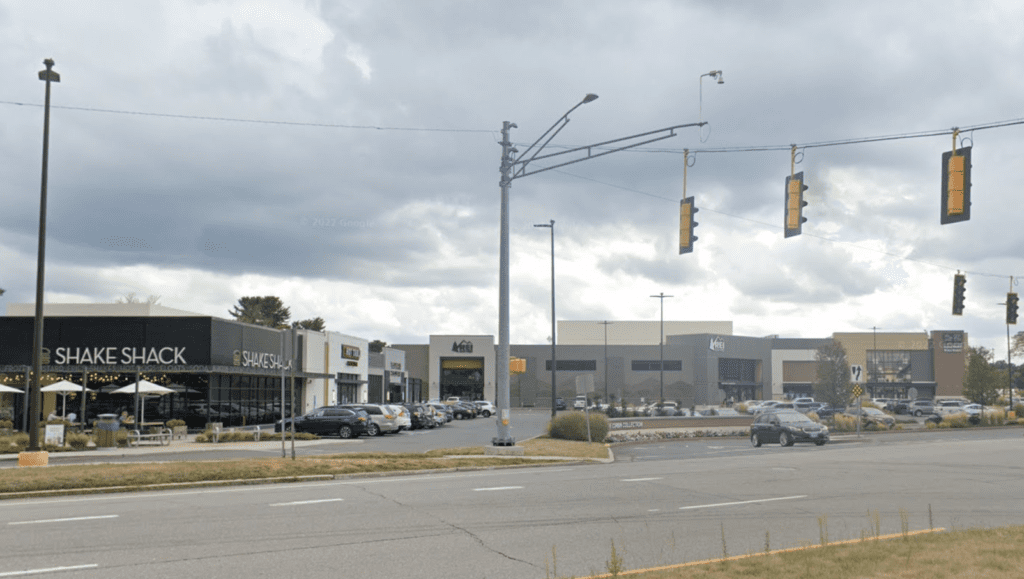
Corbin’s Corner in 2022, Google Street View
Jeff Murray was born and raised in West Hartford and has been involved with the Noah Webster House & West Hartford Historical Society since 2011 when he was a high school student and won the Meyer Prize for his essay on local history. Jeff routinely volunteers as local history researcher uncovering information for numerous museum programs such as the West Hartford House Tour and West Hartford Hauntings. Jeff works as a data analyst at Pratt & Whitney.
Like what you see here? Click here to subscribe to We-Ha’s newsletter so you’ll always be in the know about what’s happening in West Hartford! Click the blue button below to become a supporter of We-Ha.com and our efforts to continue producing quality journalism.


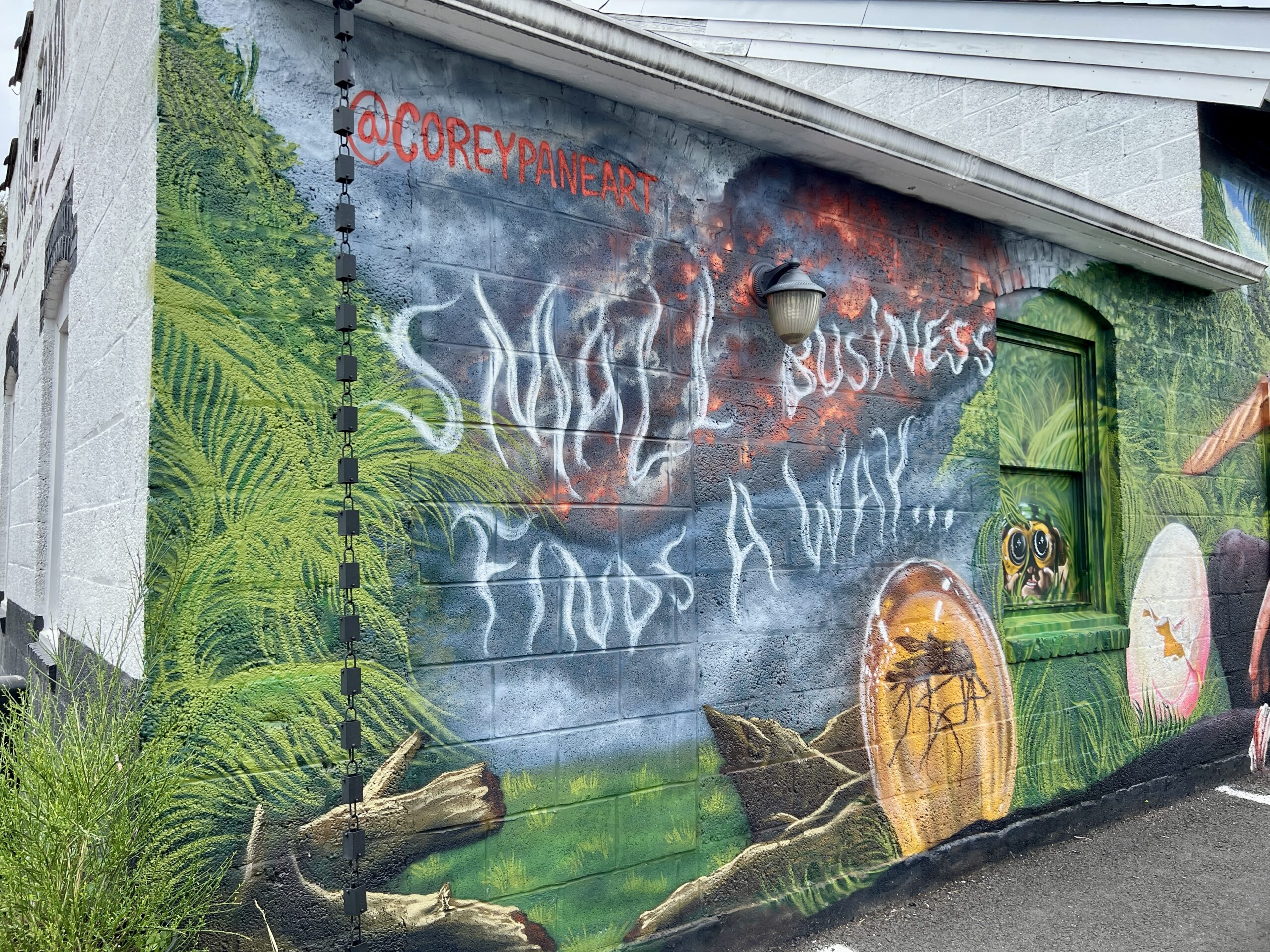
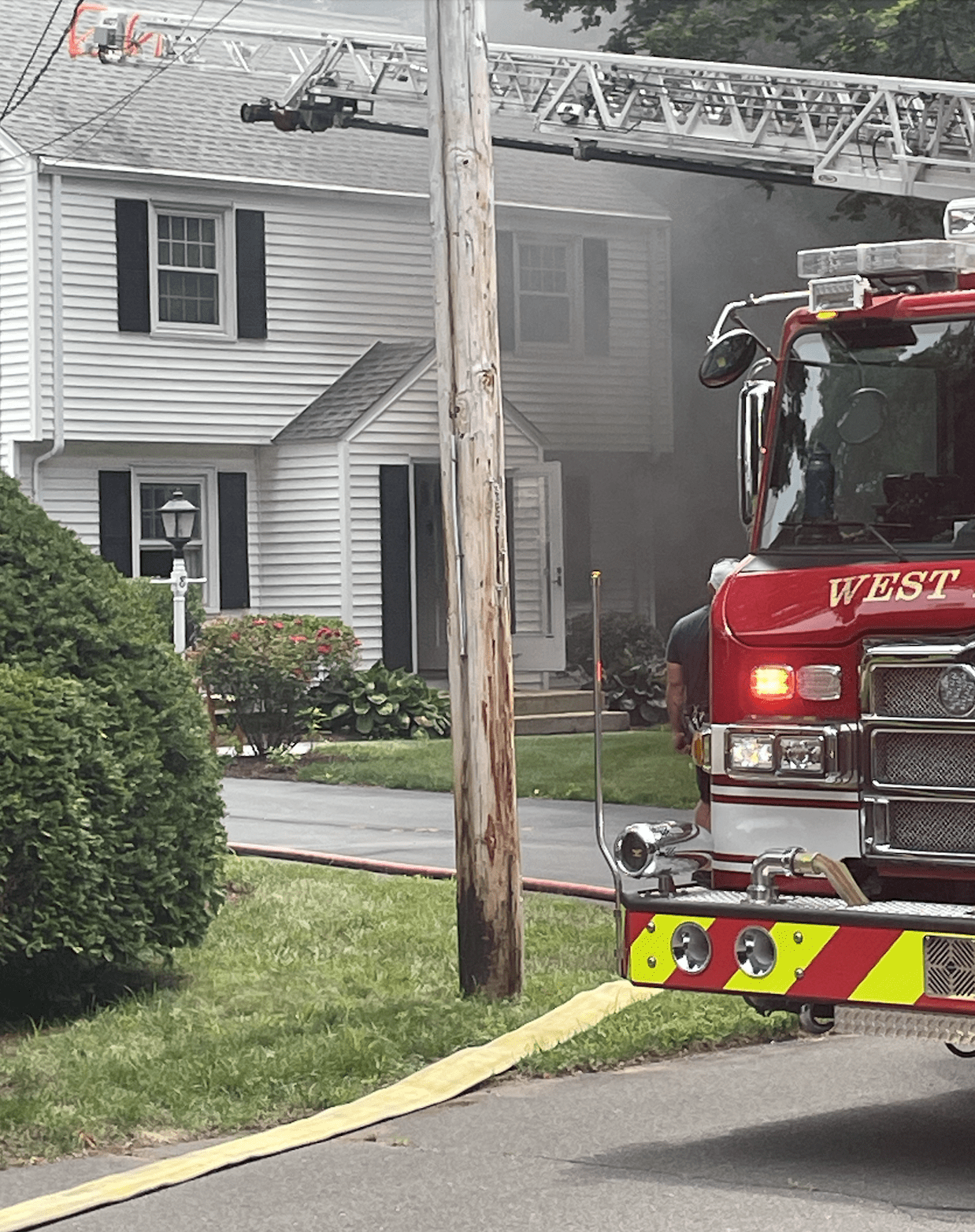
LOVE Jeff Murray’s historical accounts.!!!
Was the Newton farm owned by Ted’s ancestors?
Not as far as we know! I did check the family archives after seeing the name since his family is from this area but if there is any relationship it’s far, far, far in the past.
Torza’s also had a mini-golf course. When I was a kid, that was the end of civilization.
New Britain Ave was a 2 lane concrete road in the day.
There is a family story of a skunk corpse being disposed of beyond Torza’s back in the 60s that always brings up laughs because the disposers stopped for doughnuts nearby on the way home. Bess Eaton got cleared out in a hurry that night.